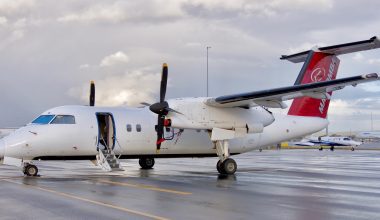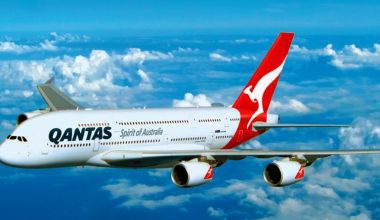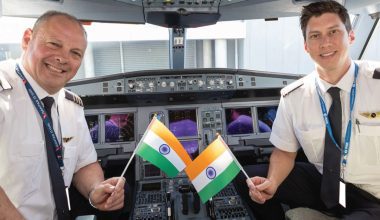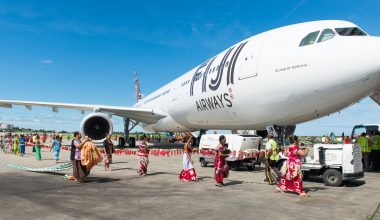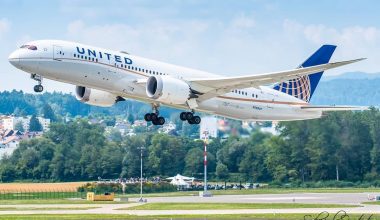Australia’s flag carrier, Qantas Airways, has reported an annual underlying pre-tax loss of A$1.86 billion and a statutory pre-tax loss of A$1.86 billion in its FY 2022 financial results for the period ending June 30, 2022. In a positive light, the carrier has managed to cut its debt to $3.94 billion, down from a high of $6.4 billion, with a strong return in passenger demand. Encouraged by the post-pandemic surge in business and leisure demand, Qantas will buy back up to A$400 million (USD278.4 million) shares in an on-market offer to run between September 12, 2022, and June 30, 2023.
Share buyback scheme
Even as Qantas posted its third consecutive annual loss, the carrier announced buying back 1,886,044,698 shares as the recovery benefits materialize. The strong rebound in passenger travel, particularly in the year’s second half period, fueled Qantas’s operations, reducing debt levels below its target range of A$4.2 billion to A$5.2 billion. The lifting of the COVID curbs opened floodgates to years of pent-up travel demand for the carrier, putting Qantas in a position to provide the first capital return for shareholders that provided A$1.4 billion of equity to help it ride the pandemic storm.

In the statement released by Qantas, the carrier announced a share buyback scheme across most of Fiscal Year 2023, offering an opportunity for capital return for the shareholders who have supported the airline throughout the pandemic. Backed by the Qantas board, the $400 million buyback is the first return to shareholders since 2019 that follows A$1.4 billion of equity raised at the start of the pandemic to support the carrier’s Recovery Plan. With the market capitalization worth $9.16 billion, the on-market share buyback of up to A$400 million represents more than 4% of the company.
The share-buyback news positively responded to the share market, sending Qantas’ share prices up 6%.
Also Read: Qantas plans to launch World’s longest nonstop commercial flight
Exceptional travel recovery
Looking at the full fiscal year 2022 financial results, Qantas Airways reported the bulk of losses in the first half of the financial year resulting from the closure of Australia’s borders. The carrier’s performance was hampered by domestic and international border closures and waves of uncertainty caused by the Omicron variant for the year’s first three quarters. The travel demand soared all-time high since the start of the pandemic in the fourth quarter, rebounding business revenue to 80% of pre-pandemic levels.
Although Total Group domestic flying averaged 63% of 2019 levels during the financial year, the rush to travel spiked the flying level to 103% by the end of the period on June 30, 2022. The carrier anticipates that the international and domestic capacity will be 84% and 106% of pre-COVID levels by the second half of FY2023. Qantas might return to profitable growth this year, pending no further major disruptions to its commercial operations.
Stain on the brand
The exceptional speed and scale of travel demand recovery also led to a host of operational problems for the Australian flagship airline, which had axed more than 8,000 workers to survive the pandemic. Flight cancellations, delays, lost bags, etc. became a common source of ire with Qantas as the carrier struggled with widespread staff shortages at airports, high rates of crew illness in winter, and outraging fuel costs.
In the statement released by the carrier, it accepted that the service provided wasn’t at the level expected of the national carrier but also assured that it would hire more people, introduce new technology, and reduce domestic flying to allow more sick leave cover-all to bring it back to its best. Responding to the rapid resignation calls following a disastrous run of operational issues marking a dirty stain on the airline brand, Qantas’ CEO Alan Joyce said that the carrier was coping better than many of its rivals and that he would continue the work as CEO to get the airline through the crisis and make Qantas stronger than it was before it went in.
Prepared for the restart, Qantas Group has returned almost all Qantas and Jetstar aircraft back to flying in Australia and New Zealand skies. Earlier in July, Jetstar welcomed its first Airbus A321LR-Long Range, which is more eco-friendly and offers 15% more fuel efficiency than A320s. Qantas Domestic is considering using Airbus A220 and A321XLR to enter the revenue service, while Qantas International is preparing to launch operations with A350.

